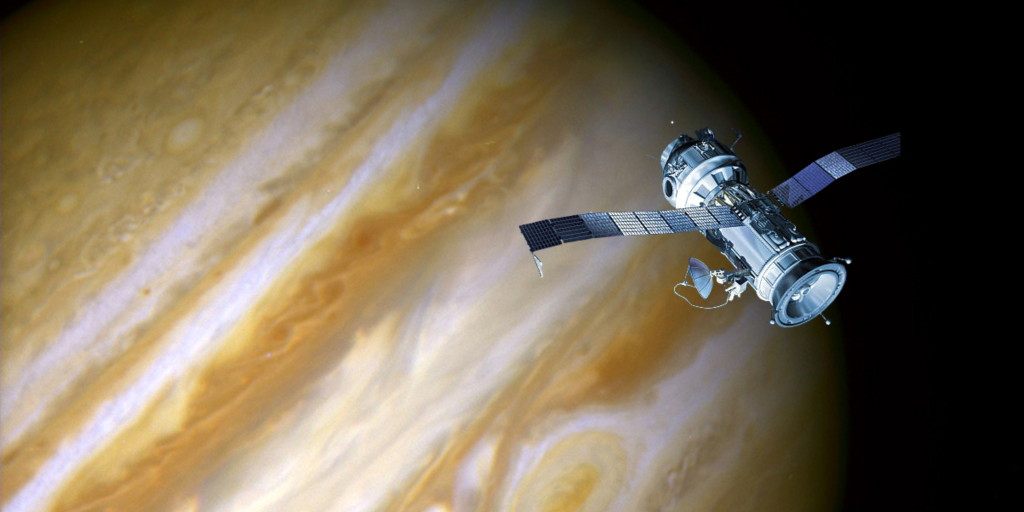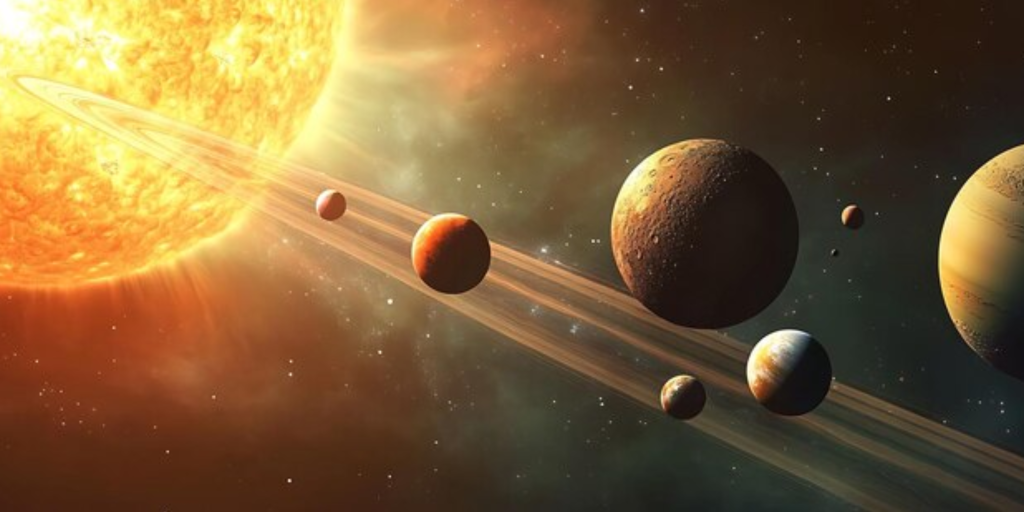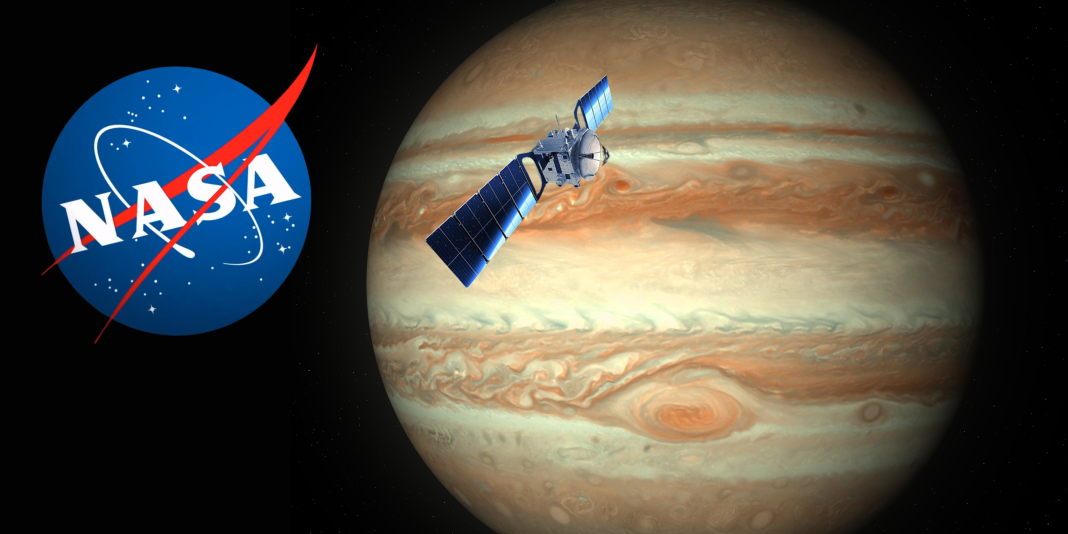Table of Contents
Introduction: Europa—Jupiter’s Mysterious Moon
Jupiter’s moon Europa is more than just a satellite orbiting the largest planet in our solar system—it’s a beacon of hope in the search for life beyond Earth. With a surface composed mostly of water ice, Europa has intrigued scientists for decades. Its smooth and fractured surface, icy crust, and suspected subsurface ocean make it one of the most promising candidates in the solar system for harboring life. For this reason, NASA’s mission to probe Europa is not just a significant step for space exploration; it’s a leap toward answering one of humanity’s most profound questions: Are we alone in the universe?
Why Europa Is So Fascinating
Europa stands out in the crowd of celestial bodies due to its distinctive characteristics. The moon’s icy shell, which could be only a few kilometers thick in some places, hides a liquid ocean that may contain more than twice the water found on Earth. Despite its average surface temperature of -160°C, the internal warmth generated by the tidal forces of Jupiter’s immense gravity keeps this ocean in a liquid state. These features, combined with Europa’s potential for chemical energy—derived from interactions between its ice and the rocky seafloor—make it a tantalizing prospect for the search for extraterrestrial life.
The Significance of NASA’s Europa Mission

The exploration of Europa has long been a priority for space scientists, and NASA’s mission to probe this moon, called the Europa Clipper, will be a landmark event in space exploration. The goal of this mission is to perform a detailed reconnaissance of Europa’s surface, its icy shell, and its subsurface ocean. Scheduled for launch in 2025, this mission will help scientists gather valuable data that could revolutionize our understanding of habitable environments outside Earth.
Mission Objectives and Timeline: A Closer Look at the Europa Clipper
NASA’s Europa Clipper is designed to conduct a series of flybys of Europa while orbiting Jupiter. Unlike missions that land on a planetary body, the Clipper will circle Jupiter and make repeated close passes of Europa, capturing high-resolution images and collecting essential data during each flyby. This technique allows the mission to minimize the intense radiation exposure that Europa experiences from Jupiter’s magnetic field.
Key objectives of the mission include:
- Mapping the Surface: Europa’s surface features will be mapped in unprecedented detail, allowing scientists to better understand the geological processes at work.
- Probing for Liquid Water: One of the most critical objectives is to confirm the existence and depth of Europa’s subsurface ocean. The Clipper’s radar system will penetrate the icy crust, helping researchers determine how deep the ocean lies and whether it could harbor life.
- Analyzing Chemistry: Instruments aboard the Clipper will study the chemistry of Europa’s surface and atmosphere, focusing on organic molecules and other compounds that could indicate life-sustaining environments.
- Measuring Ice Thickness: The Clipper will determine the thickness of the icy shell and search for plumes of water vapor, which could provide direct access to the subsurface ocean.
Technologies and Instruments: A Cutting-Edge Arsenal
The Europa Clipper will carry a suite of advanced scientific instruments designed to unravel the mysteries of this enigmatic moon. Some of the key tools include:
- Ice-Penetrating Radar: This instrument will be crucial for measuring the thickness of Europa’s icy crust and detecting any potential pockets of water beneath it.
- Magnetometer: By measuring the magnetic field around Europa, the magnetometer will help determine the characteristics of its subsurface ocean, such as its depth and salinity.
- Thermal Imaging Cameras: These cameras will identify warmer regions on Europa’s surface, which may indicate recent geological activity like ice movement or water upwelling.
- Mass Spectrometer: This device will analyze the composition of Europa’s thin atmosphere and any plumes of water vapor, providing clues about the moon’s internal chemistry.
- Spectrometer: Capable of detecting organic compounds, this instrument will be critical in the search for chemical signs of life.
Challenges and Obstacles in Studying Europa
Studying Europa is no easy feat, and the mission faces several challenges. The most significant obstacle is the extreme radiation environment generated by Jupiter’s magnetosphere. Europa lies within this intense radiation belt, which poses a threat not only to spacecraft systems but also to the instruments onboard. To mitigate this, the Clipper is designed to make short, frequent flybys rather than remaining near the moon for extended periods.
Another challenge is the icy surface itself. While it’s known that Europa’s ice covers a vast ocean, the thickness of this ice is uncertain. Some estimates suggest it could be several kilometers thick, making direct exploration of the subsurface ocean nearly impossible with current technology. However, future missions could overcome this challenge with new technologies such as ice-drilling robots or autonomous submersibles.
Why Europa is a Top Contender for Extraterrestrial Life

Europa’s status as a top contender in the search for life stems from several factors. First and foremost, water is essential for life as we know it, and Europa’s subsurface ocean potentially provides a vast, liquid environment. Additionally, the moon’s interaction with Jupiter’s gravity generates heat through tidal flexing, creating the potential for chemical reactions between water and the seafloor—reactions that could support life.
Scientists are particularly interested in the plumes of water vapor detected emanating from Europa’s surface, similar to the geysers found on Saturn’s moon Enceladus. If these plumes contain organic molecules, it could provide direct evidence of the conditions required for life beneath the ice. By flying through these plumes, the Europa Clipper could sample the water and analyze it for signs of biological activity.
What Scientists Hope to Discover
Scientists hope that the Europa Clipper will help answer several key questions, such as:
- Is Europa’s ocean in contact with its rocky mantle? If so, this could enable chemical reactions that provide energy for life, similar to hydrothermal vents on Earth.
- Are there organic molecules on Europa? These molecules are the building blocks of life, and their presence would significantly boost Europa’s habitability prospects.
- How active is Europa’s ice shell? Geological activity, such as cracks and shifting ice, could allow for the exchange of materials between the surface and the ocean, making the environment even more favorable for life.
Broader Implications: Redefining Life in the Solar System

The implications of the Europa Clipper mission go far beyond just understanding Europa itself. If life—or even the potential for life—is discovered on Europa, it would completely transform our understanding of biology. It would mean that life is not unique to Earth and that the conditions required for life are more common than previously thought.
Furthermore, the discovery of life on Europa could inspire a new generation of planetary exploration missions. Missions to moons like Titan (another of Saturn’s moons) or Ganymede (another of Jupiter’s moons) could follow, targeting other icy worlds where life might exist. These discoveries could eventually shape humanity’s long-term goals in space exploration, from the search for life to future colonization.
Future Missions Inspired by Europa

Europa is just the beginning. The success of the Europa Clipper mission could pave the way for more ambitious endeavors, such as sending landers or probes capable of directly sampling the subsurface ocean. NASA has already considered ideas like the Europa Lander, a mission that would touch down on the moon’s surface and possibly drill into the ice to collect samples.
Other space agencies, such as ESA (European Space Agency), are also keen on exploring icy moons. The JUICE mission (Jupiter Ice moons Explorer), for example, is set to explore Europa, Ganymede, and Callisto, further expanding our understanding of these fascinating worlds.
Conclusion: A New Frontier for Discovery
NASA’s mission to Europa represents a thrilling chapter in the story of space exploration. As we push the boundaries of technology and scientific understanding, Europa offers a tantalizing glimpse of what might be lurking beneath the icy surface—an ocean teeming with the potential for life. The Europa Clipper mission will help answer some of the most pressing questions about the habitability of this distant world, setting the stage for future missions that may one day land on Europa or even dive into its mysterious ocean.
In the broader scope, this mission signifies more than just a search for life on one moon; it’s a step toward redefining life’s possibilities within our solar system. The data collected could inspire new missions, shape our understanding of planetary science, and ultimately bring us closer to answering the age-old question: Are we alone in the universe?






































